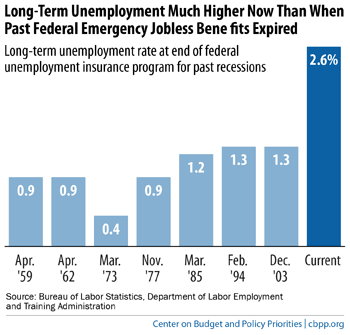State officials are warning that the bipartisan bill to reinstate federal benefits for the long-term unemployed that passed the Senate on Monday could be a logistical nightmare to implement and could expose the government to extensive fraud.
The measure would provide five months of retroactive benefits for people who were out of work for about six months or longer -- lawmakers allowed those payments to expire in December. The move is being heralded as Washingtonfs last-ditch effort to stimulate the economy by helping the long-term unemployed. But the state agencies responsible for administering the benefits say actually helping that population could prove to be logistically difficult.
Most states stopped tracking people who participated in the program after the federal benefits expired in December, said Richard Hobbie, executive director of the National Association of State Workforce Agencies. To qualify for these payments, applicants have to prove they are actively looking for a job. Many states require weekly check-ins and verification with workforce officials.
All of this means officials may have no way to certify whether an unemployed person continued to look for work to determine if they are eligible for retroactive benefits.
gThe legislation would have to release states from this requirement or the potential for improper payments would be enormous,h his group said in a letter to senators last month.
Congress has provided retroactive federal unemployment benefits before. But in previous cases, the payments had only lapsed for a short time and passage of an extension seemed assured, so states continued to track eligible workers. In a letter to senators, Labor Secretary Thomas Perez said the agency gcould successfully address this challenge again.h
"With unemployed Americans continuing to struggle, itfs our responsibility to provide them a lifeline," Perez said in an e-mail to The Post. "Ifve spoken to many governors and state labor secretaries who are ready to implement any changes -- because they understand that whatever administrative burden they might face pales in comparison to the burdens confronting the long-term unemployed. The workforce system is capable of handling this task."
The nearly five-month gap between the expiration of the benefits in December and the May 31 cutoff for federal benefits in the Senate bill would be the most extensive revival state officials have had to undertake. NASWA said that most state agencies estimate it could take one to three months to process payments to the unemployed under the bill as it's written. A few states have even warned that implementation could be so unwieldy that they may opt out of Labor Department program that provides the benefit to workers.
Hobbie said some states laid off or reassigned the workers who were administering the federal program, which at one point was larger than the state programs. Hiring and training new employees to handle retroactive benefits would also draw out the timeline for implementation. Other complications include the level of benefits to which each state is entitled. Federal unemployment benefits are paid to jobseekers after they have exhausted their state benefits, which typically end at around six months. How many additional weeks of federal payments workers can receive depends on the unemployment rate in their state: The higher the jobless rate, the more help they can get.
But some statesf unemployment rates have fallen enough over the past four months to change their status. So officials will have to pinpoint the time of jobless workersf claims would have been filed to make sure they are receiving the right level of benefits.
State agencies also took issue with the so-called gmillionairefs provisionh in the Senate bill that would bar unemployed workers who had adjusted gross income of at least a million dollars from collecting benefits. But local officials do not collect that information, creating another hurdle to implementation.
Fundamentally, state workforce agencies said the sheer magnitude of the billfs requirements would tax the antiquated computer systems -- which average 25 years old -- used to process workersf claims. Hobbie said some of the systems run on an outdated programming language called COBAL, and some agencies have had trouble finding technicians who still know the code.
The bill is also unclear on whether states would be able to use federal money to pay for administering the program, though the Labor Department said the issue could be resolved with a technical amendment to the current measure. The Labor Department also said it has provided state agencies with $345 million over the past five years to update their technology.
gNobody in their right mind would say this would be a piece of cake and states could snap their fingers and this could all be taken care of,h said Judy Conti, federal advocacy coordinator for the National Employment Law Project, which supports reinstating the benefits. gFor anybody to say itfs unworkable, itfs just flat out a lie.h
Hobbie said implementing the current bill is not impossible but will prove more challenging than many lawmakers -- and workers -- may expect.
gThis is worse than itfs ever been,h he said. g It might take some time and individuals might be disappointed by how long states take to do this, but our members always find ways.h
The bill faces an uncertain future in the Republican-led House. But even if it does pass -- and even if states figure out how to implement the measure -- the effort to renew the federal benefits comes too late for many workers. After the payments ended in December, some workers opted to file for early Social Security benefits. Others may have enrolled in school or simply stopped looking for a job, disqualifying them for retroactive payments.
